-
 A volume of military activity, weaponry and technology from 1987. Arenas of activity covered: The Middle East - Tripoli; Lebanon; the Gulf War; South Yemen and the Arab-Israeli conflict. Europe, North America and the Soviet Union: Terrorism and Power Politics; The Superpower Relationship; NATO and the Warsaw Pact; International Terror; Northern Ireland. Asia - Islam's Guerrillas; The Tamil Tigers; The Philippines; Vietnam and Cambodia' Sikh Separatists. Africa - South Africa; Mozambique; Angola; Chad; The Sudan; Ethiopia; The Boy Soldiers of Uganda. Latin America: Guerrillas and Contras; El Salvador; Nicaragua; Peru; Chile. Military Technology: The War Machine; Aerial Warfare; Space and Missiles; Land Warfare; Naval Warfare. A wealth of information for the war history buff with plenty of colour photographs.
A volume of military activity, weaponry and technology from 1987. Arenas of activity covered: The Middle East - Tripoli; Lebanon; the Gulf War; South Yemen and the Arab-Israeli conflict. Europe, North America and the Soviet Union: Terrorism and Power Politics; The Superpower Relationship; NATO and the Warsaw Pact; International Terror; Northern Ireland. Asia - Islam's Guerrillas; The Tamil Tigers; The Philippines; Vietnam and Cambodia' Sikh Separatists. Africa - South Africa; Mozambique; Angola; Chad; The Sudan; Ethiopia; The Boy Soldiers of Uganda. Latin America: Guerrillas and Contras; El Salvador; Nicaragua; Peru; Chile. Military Technology: The War Machine; Aerial Warfare; Space and Missiles; Land Warfare; Naval Warfare. A wealth of information for the war history buff with plenty of colour photographs. -
 Shot down in 1942, young Australian fighter pilot John Williams DFC became a POW in the notorious Stalag Luft III camp in Germany. John had joined the air force shortly before the outbreak of war and, in the larrikin tradition, led his squadron into air combat over the deserts of Libya and Egypt dressed in sandals and shorts. John and his best mate Rusty Kierath were among the 76 POWs who tunnelled their way out of the supposedly escape-proof camp under the noses of their German guards in what later became the Hollywood blockbuster, The Great Escape. Their families never learned what really happened once the pair made it out into the forest. John's niece Louise Williams has pieced together his life, from his upbringing in a tight-knit family hit hard by the Depression, to his exploits in the air, and the many missing details of the tragic escape. It is a powerful and intimate story of one of the most dramatic episodes of World War II. Illustrated with black and white photographs.
Shot down in 1942, young Australian fighter pilot John Williams DFC became a POW in the notorious Stalag Luft III camp in Germany. John had joined the air force shortly before the outbreak of war and, in the larrikin tradition, led his squadron into air combat over the deserts of Libya and Egypt dressed in sandals and shorts. John and his best mate Rusty Kierath were among the 76 POWs who tunnelled their way out of the supposedly escape-proof camp under the noses of their German guards in what later became the Hollywood blockbuster, The Great Escape. Their families never learned what really happened once the pair made it out into the forest. John's niece Louise Williams has pieced together his life, from his upbringing in a tight-knit family hit hard by the Depression, to his exploits in the air, and the many missing details of the tragic escape. It is a powerful and intimate story of one of the most dramatic episodes of World War II. Illustrated with black and white photographs. -
 Who is Captain Sir Tom Moore? You've seen him on the television walking the length of his garden. A frail elderly man, doing his bit at a time of crisis. But he wasn't always like this. From a childhood in the foothills of the Yorkshire Dales, Tom Moore grew up in a loving family, which wasn't without its share of tragedy. It was a time of plenty and of want. When the storm clouds of the Second World War threatened, he raised his hand and like many of his generation, joined up to fight. His war would take him from a country he had never left to a place which would steal his heart, India and the Far East, to which he would return many years later to view the sight he had missed first time around: the distant peak of Everest. Captain Tom's story is our story. It is the story of our past hundred years here in Britain. It's a time which has seen so much change, yet when so much has stayed the same: the national spirit, the can-do attitude, the belief in doing your best for others. Illustrated with photographs.
Who is Captain Sir Tom Moore? You've seen him on the television walking the length of his garden. A frail elderly man, doing his bit at a time of crisis. But he wasn't always like this. From a childhood in the foothills of the Yorkshire Dales, Tom Moore grew up in a loving family, which wasn't without its share of tragedy. It was a time of plenty and of want. When the storm clouds of the Second World War threatened, he raised his hand and like many of his generation, joined up to fight. His war would take him from a country he had never left to a place which would steal his heart, India and the Far East, to which he would return many years later to view the sight he had missed first time around: the distant peak of Everest. Captain Tom's story is our story. It is the story of our past hundred years here in Britain. It's a time which has seen so much change, yet when so much has stayed the same: the national spirit, the can-do attitude, the belief in doing your best for others. Illustrated with photographs. -
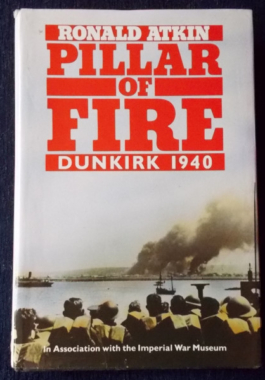
Pillar Of Fire: Ronald Atkin
$15.00In the space of three and a half weeks during May and June of 1940, Nazi Germany came perilously close to winning the war a scant ten months after it started. The British Expeditionary Force and the French and Belgian allies were cut off in the North and driven to the very sands of the Channel and the ruins of Dunkirk, the lone port still in the hands of the B.E.F. Britain faced catastrophe. How that catastrophe was averted through a combination of enemy blunders and British resourcefulness is told here in an account that exposes the 'miracle' of Dunkirk. Here is the true story, chronicled through diaries, memoirs and personal reminiscences of the hundreds of men who lived through those weeks; COs, foot soldiers, generals and privates. Very in-depth.
-
 In the darkest days of World War II, this is the true story of ten brave young men flying their twenty-fifth and final bombing mission in the Flying Fortress, Memphis Belle. Some say the team is exceptional; others that the Memphis Belle is the luckiest plane in the war. But this is a mission that can change everything. Only if the men can successfully destroy the munitions factory in the heart of Germany will they get to go home. Dangerous, almost impossible, it is a mission that will test their skill and teamwork to the limit - and each man will become a hero - whether he lives or dies. Monte Merrick also wrote the screenplay for the Warner Bros film of the same name.
In the darkest days of World War II, this is the true story of ten brave young men flying their twenty-fifth and final bombing mission in the Flying Fortress, Memphis Belle. Some say the team is exceptional; others that the Memphis Belle is the luckiest plane in the war. But this is a mission that can change everything. Only if the men can successfully destroy the munitions factory in the heart of Germany will they get to go home. Dangerous, almost impossible, it is a mission that will test their skill and teamwork to the limit - and each man will become a hero - whether he lives or dies. Monte Merrick also wrote the screenplay for the Warner Bros film of the same name. -
 The story closely follows key events of the Xinhai Revolution, with focus on Huang Xing and Sun Yat-sen. It begins with the Wuchang Uprising of 1911 and follows through historical events such as the Second Guangzhou Uprising on 27 April 1911, the deaths of the 72 martyrs, the election of Sun Yat-sen as the provisional president of the new Provisional Republic of China, the abdication of the last Qing dynasty emperor Puyi on 12 February 1912, and Yuan Shikai becoming the new provisional president in Beijing on 10 March 1912. Also known as Xinhai Revolution and 1911.
The story closely follows key events of the Xinhai Revolution, with focus on Huang Xing and Sun Yat-sen. It begins with the Wuchang Uprising of 1911 and follows through historical events such as the Second Guangzhou Uprising on 27 April 1911, the deaths of the 72 martyrs, the election of Sun Yat-sen as the provisional president of the new Provisional Republic of China, the abdication of the last Qing dynasty emperor Puyi on 12 February 1912, and Yuan Shikai becoming the new provisional president in Beijing on 10 March 1912. Also known as Xinhai Revolution and 1911. -
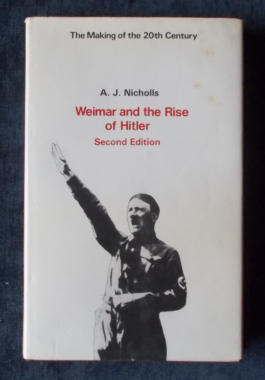 Regarded as the classic text on the Weimar Republic, Nicholls begins with Germany's defeat in 1918 and the revolutionary disturbances that followed the collapse of Wilhelm II's Empire. It describes the strengths and weaknesses of the new regime, and the stresses created by the economic difficulties of the 1920s. Adolf Hitler's career is traced from its early beginnings in Munich, and the nature of his movement is assessed.
Regarded as the classic text on the Weimar Republic, Nicholls begins with Germany's defeat in 1918 and the revolutionary disturbances that followed the collapse of Wilhelm II's Empire. It describes the strengths and weaknesses of the new regime, and the stresses created by the economic difficulties of the 1920s. Adolf Hitler's career is traced from its early beginnings in Munich, and the nature of his movement is assessed. -
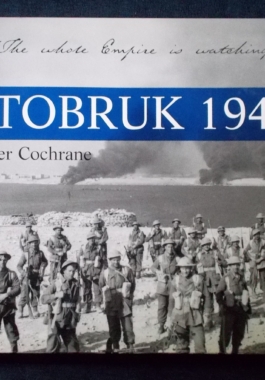
Tobruk 1941: Peter Cochrane
$15.00No surrender...no retreat. When the 9th Division of the AIF withdrew into the desert fortress town of Tobruk in April 1941, a siege began that would make its mark on the course of World War II and the popular memory of a nation. The siege was intended to last no longer than two months, but ultimately extended to eight. Under the command of Morshead, the Allied troops employed an aggressive, daring defence that put a sizeable dent ion Rommel's aura of invincibility. The defiant Aussie diggers distinguished themselves through their determination and unquenchable cheerful spirit. The success of the Rats of Tobruk inspired hope for the possibility of effective resistance in the midst of the darkest days of the war. Illustrated with archival black and white photographs. -

 Frank Dell's experience as a Second World War pilot with the Royal Air Force's Light Night Striking Force took an even more dramatic turn when his Mosquito was shot down over Germany on the night of 14/15 October 1944. Frank recounts his escape from the disintegrating aircraft, his descent by parachute, and how, battered and bruised, he finds himself in a field adjacent to a German V2 rocket launch pad. Determined to avoid capture Frank crosses Nazi Germany and finds refuge in Holland with a Dutch Resistance group. A schoolboy when the conflict broke out, Frank Dell's extraordinary war takes him from a Home Guard unit defending the English coast against enemy invasion in 1940, to a tragic incident leading to the execution of Dutch civilians only weeks before the end of the hostilities. Frank's observant eye gives insight into what it is like to train and fly operationally with RAF Bomber Command, followed by the even greater challenges he confronts as he narrowly escapes capture while on the run from the Germans.
Frank Dell's experience as a Second World War pilot with the Royal Air Force's Light Night Striking Force took an even more dramatic turn when his Mosquito was shot down over Germany on the night of 14/15 October 1944. Frank recounts his escape from the disintegrating aircraft, his descent by parachute, and how, battered and bruised, he finds himself in a field adjacent to a German V2 rocket launch pad. Determined to avoid capture Frank crosses Nazi Germany and finds refuge in Holland with a Dutch Resistance group. A schoolboy when the conflict broke out, Frank Dell's extraordinary war takes him from a Home Guard unit defending the English coast against enemy invasion in 1940, to a tragic incident leading to the execution of Dutch civilians only weeks before the end of the hostilities. Frank's observant eye gives insight into what it is like to train and fly operationally with RAF Bomber Command, followed by the even greater challenges he confronts as he narrowly escapes capture while on the run from the Germans. -
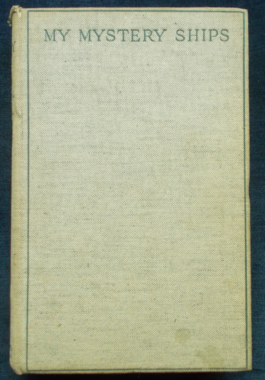 World War I saw a significant and tragic change to the prosecution of war. Allied passenger and merchant ships were blatantly attacked by the enemy, resulting in dreadful civilian losses. The mystery ships were then created - they were disguised as peaceful merchant ships, but which were equipped with guns hidden until a few seconds before opening fire on enemy submarines. They cruised on the trade routes, hoping to encounter enemy submarines and attract them to attack, and when the submarine came to the surface, bombard her with heavy armament. The guns had to be accurate, necessitating rigid drill and discipline - one officer or man making an error would give the show away and risk the ship and crew. This book, first published in 1928, is the first to tell the real story of life on board and the stories of attacks on and by submarines as well as describing the life on board - the discomforts, difficulties and dangers of this method of fighting back. There was also an explanation of the attraction this form of service has for men who were independent and courageous with a strict sense of moral duty. The crew were constantly on alert: one false step could lead to the ship being torpedoed, with those left to try and save themselves or being taken prisoner; discipline and readiness for immediate action were strict from the moment of leaving harbour until safe within the harbour on return. Campbell served on the mystery ships from 2015 to 2017, beginning as a Lieutenant-Commander R.N., and ending that part of his naval career as a Captain R.N. with a V.C. and three D.S.O.s. A little-known and over-looked part of war history. With illustrations by Lieutenant J.E. Broome, R.N.
World War I saw a significant and tragic change to the prosecution of war. Allied passenger and merchant ships were blatantly attacked by the enemy, resulting in dreadful civilian losses. The mystery ships were then created - they were disguised as peaceful merchant ships, but which were equipped with guns hidden until a few seconds before opening fire on enemy submarines. They cruised on the trade routes, hoping to encounter enemy submarines and attract them to attack, and when the submarine came to the surface, bombard her with heavy armament. The guns had to be accurate, necessitating rigid drill and discipline - one officer or man making an error would give the show away and risk the ship and crew. This book, first published in 1928, is the first to tell the real story of life on board and the stories of attacks on and by submarines as well as describing the life on board - the discomforts, difficulties and dangers of this method of fighting back. There was also an explanation of the attraction this form of service has for men who were independent and courageous with a strict sense of moral duty. The crew were constantly on alert: one false step could lead to the ship being torpedoed, with those left to try and save themselves or being taken prisoner; discipline and readiness for immediate action were strict from the moment of leaving harbour until safe within the harbour on return. Campbell served on the mystery ships from 2015 to 2017, beginning as a Lieutenant-Commander R.N., and ending that part of his naval career as a Captain R.N. with a V.C. and three D.S.O.s. A little-known and over-looked part of war history. With illustrations by Lieutenant J.E. Broome, R.N. -
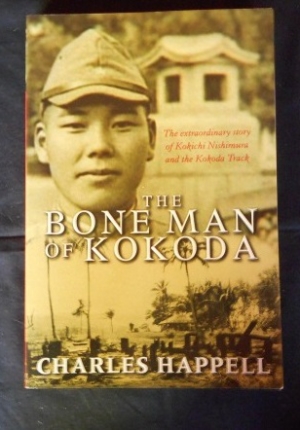
Kokichi Nishimura was a member of the 2nd battalion, 144th regiment of the Japanese Imperial Army. In 1942 he fought every foot of the Kokoda Track as the Japanese attempted to take Port Moresby and was the only man from his platoon to survive the campaign. Finally he retreated, wounded and starving, leaving thousands of his comrades buried in shallow graves along the Track. He promised that he would one day return to them and bring them home to Japan for proper burial. He married, had three children and started an engineering business which prospered. But his driving ambition was to return to New Guinea to keep his promise. In 1979, nearing retirement age, he shocked his family by giving his business to his sons, his house and all his assets to his wife and he returned to New Guinea to begin his search for the remains of Japanese soldiers. For the next 25 years Nishimura lived alone in huts and tents along the Kokoda Track and using a mattock, a shovel, a metal detector and an indomitable will, he found the bones of hundreds of his comrades and also forged a new comradeship and new purpose in helping the poverty-stricken Papuans he worked amongst. An incredible story. Illustrated with black and white photographs.
-
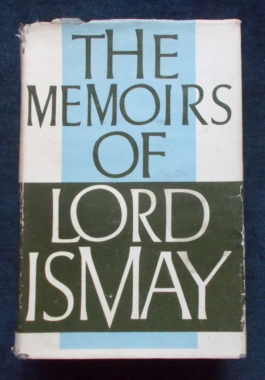 The appointment of Major-General H.L. Ismay to the Chiefs of Staff Committee was made on May 1st, 1940, when Churchill was First Lord of the Admiralty. On May 10th he succeeded Chamberlain as Prime Minister and Ismay's position at once became of the first importance. His functions were ill defined. He liked to call himself Churchill's "agent"; but he was very much more than that term usually implies. Out of his close association with the Prime Minister there grew a deep understanding and friendship. Accompanying him everywhere from blitzed areas in London to major conferences all over the world, or sharing with him his moments of relaxation after the heat of the day, Ismay had unique opportunities to observe the Colossus who was his master and his memoir paints a full portrait of Churchill. In 1925 Ismay was appointed Assistant Secretary to the Committee of Imperial defence. By the outbreak of the Second World War he was very experienced in committee work. The waging of total war in a democracy is a complex business: committees and conferences have to do their work, temperaments have to be reconciled and methods of implementing decisions arrived at. It is this aspect of the war covered by Lord Ismay. He was important as a peacemaker and mediator; there was no lack of potential friction between the Chiefs of Staff and their political superiors in World War II and the fact that this friction remained largely potential was largely due to Ismay. After his years in India, Somaliland and Whitehall and his work in World War II, he returned post-war to India as the personally invited advisor to the Viceroy, Lord Mountbatten, to contribute to the settlement of Partition, and after its successful conclusion Lord Ismay crowned his career of public service as the head of the North Atlantic Treaty Organization (NATO) where he strove to prevent a future war with the same energy as he had helped to win the past one.
The appointment of Major-General H.L. Ismay to the Chiefs of Staff Committee was made on May 1st, 1940, when Churchill was First Lord of the Admiralty. On May 10th he succeeded Chamberlain as Prime Minister and Ismay's position at once became of the first importance. His functions were ill defined. He liked to call himself Churchill's "agent"; but he was very much more than that term usually implies. Out of his close association with the Prime Minister there grew a deep understanding and friendship. Accompanying him everywhere from blitzed areas in London to major conferences all over the world, or sharing with him his moments of relaxation after the heat of the day, Ismay had unique opportunities to observe the Colossus who was his master and his memoir paints a full portrait of Churchill. In 1925 Ismay was appointed Assistant Secretary to the Committee of Imperial defence. By the outbreak of the Second World War he was very experienced in committee work. The waging of total war in a democracy is a complex business: committees and conferences have to do their work, temperaments have to be reconciled and methods of implementing decisions arrived at. It is this aspect of the war covered by Lord Ismay. He was important as a peacemaker and mediator; there was no lack of potential friction between the Chiefs of Staff and their political superiors in World War II and the fact that this friction remained largely potential was largely due to Ismay. After his years in India, Somaliland and Whitehall and his work in World War II, he returned post-war to India as the personally invited advisor to the Viceroy, Lord Mountbatten, to contribute to the settlement of Partition, and after its successful conclusion Lord Ismay crowned his career of public service as the head of the North Atlantic Treaty Organization (NATO) where he strove to prevent a future war with the same energy as he had helped to win the past one. -
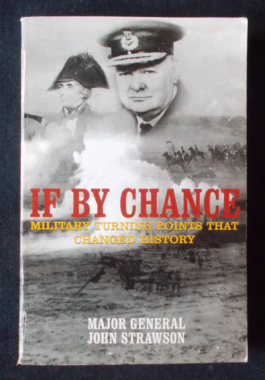 Could Napoleon have won the battle of Waterloo? And what would have happened if he had? Or suppose Nelson had not destroyed the French fleet at Aboukir, would Napoleon have conquered India and become Emperor of the East? What if Hitler had not halted his panzer forces before Dunkirk and had entrapped the entire British Expeditionary Force? How would Churchill have then denied the Wehrmacht? If by chance Hitler had been assassinated in 1944 and the German General Staff taken control, would there have been a totally different kind of surrender? In examining these and other contingencies, Major General Strawson brings his experience of command in war and his skill as a military historian to present us with an enthralling catalogue of chance and speculation, while emphasising how profoundly the character of commanders influenced events and how events affected their character.
Could Napoleon have won the battle of Waterloo? And what would have happened if he had? Or suppose Nelson had not destroyed the French fleet at Aboukir, would Napoleon have conquered India and become Emperor of the East? What if Hitler had not halted his panzer forces before Dunkirk and had entrapped the entire British Expeditionary Force? How would Churchill have then denied the Wehrmacht? If by chance Hitler had been assassinated in 1944 and the German General Staff taken control, would there have been a totally different kind of surrender? In examining these and other contingencies, Major General Strawson brings his experience of command in war and his skill as a military historian to present us with an enthralling catalogue of chance and speculation, while emphasising how profoundly the character of commanders influenced events and how events affected their character. -
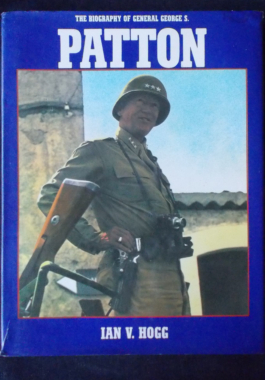
Patton's aggression and theatrical personality made his units the most successful and efficient and he believed that it should be his Army that should lead the Allied attacks. This brought him into constant conflict with Eisenhower and Montgomery, with Patton doing nothing to hide his belief that he would win the war if properly supported. He expected the same aggression from his men and was probably the best American field commander in the European theatre.










